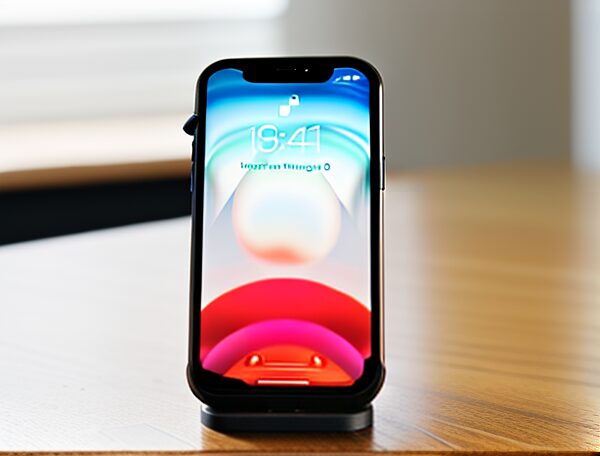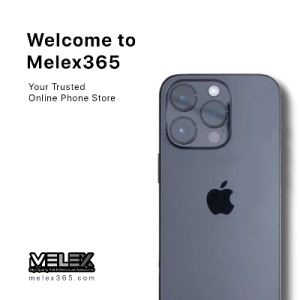Your iPhone is more than just a phone; it’s your camera, your GPS, your entertainment hub, and your connection to the world. But did you know that extreme weather can wreak havoc on your beloved device? Whether it’s the scorching heat of summer or the freezing cold of winter, your iPhone is vulnerable to temperature extremes. In this article, we’ll explore how to protect your iPhone from extreme weather, ensuring it stays in tip-top shape no matter the season.
Why Extreme Weather is a Threat to Your iPhone
Extreme temperatures can cause serious damage to your iPhone’s internal components. Heat can lead to battery swelling, screen damage, and even data loss, while cold can cause your battery to drain rapidly and your screen to become unresponsive. Understanding these risks is the first step in protecting your device.
The Importance of Protecting Your Device
Your iPhone is a significant investment, and protecting it from extreme weather can save you from costly repairs or replacements. Plus, no one wants to be stranded without their phone, especially in an emergency. By following these tips, you can ensure your iPhone remains functional and reliable, no matter the weather.
Understanding iPhone’s Temperature Limits
Apple’s Official Temperature Guidelines
Apple recommends using your iPhone in environments where the temperature is between 0°C (32°F) and 35°C (95°F). Storing your iPhone should be done in temperatures between -20°C (-4°F) and 45°C (113°F). Exceeding these limits can lead to performance issues and permanent damage.
What Happens When Your iPhone Overheats or Freezes?
When your iPhone overheats, you might notice it becoming sluggish, the screen dimming, or even shutting down completely. In extreme cases, the battery can swell, causing physical damage. On the other hand, cold temperatures can cause your battery to drain faster, and your screen may become unresponsive or crack.

Tips for Protecting Your iPhone in Hot Summers
Avoid Direct Sunlight
One of the simplest ways to protect your iPhone in the summer is to keep it out of direct sunlight. Whether you’re at the beach or just lounging in your backyard, make sure your phone is in the shade. Direct sunlight can quickly raise the temperature of your device, leading to overheating.
Use a Protective Case
A good protective case can do more than just protect your iPhone from drops and scratches; it can also provide some insulation against heat. Look for cases made from materials that don’t conduct heat easily, such as silicone or rubber.
Keep Your iPhone in the Shade
If you’re spending time outdoors, try to keep your iPhone in the shade as much as possible. Use a beach umbrella, sit under a tree, or keep it in a bag when not in use. This simple step can go a long way in preventing overheating.
Best Types of Cases for Heat Protection
When choosing a case for heat protection, opt for ones with built-in cooling technology or those made from heat-resistant materials. Some cases even come with built-in fans or heat-dissipating designs to keep your iPhone cool.
Limit Usage in High Temperatures
Using your iPhone in high temperatures can generate additional heat, especially if you’re playing games, streaming videos, or using GPS. Try to limit your usage during the hottest parts of the day to prevent overheating.
Cool Down Your iPhone Safely
If your iPhone does overheat, don’t panic. Turn it off and move it to a cooler place. Avoid putting it in the fridge or freezer, as sudden temperature changes can cause condensation inside the device. Instead, let it cool down naturally in a shaded area.

Tips for Protecting Your iPhone in Cold Winters
Avoid Leaving Your iPhone in the Car
In winter, your car can become a freezer overnight. Leaving your iPhone in the car can expose it to extremely low temperatures, which can damage the battery and screen. Always take your phone with you when you leave the car.
Use Insulated Cases
Just as you bundle up in winter, your iPhone needs some extra protection too. Insulated cases can help keep your iPhone warm in cold weather. Look for cases with thermal insulation or those made from materials that retain heat.
Keep Your iPhone Close to Your Body
Your body heat can help keep your iPhone warm in cold weather. Keep it in an inside pocket of your jacket or close to your body when you’re outside. This will help maintain a stable temperature for your device.
Best Types of Cases for Cold Protection
For cold weather, consider cases with thermal insulation or those made from materials like neoprene, which can help retain heat. Some cases even come with built-in hand warmers or heating elements to keep your iPhone warm.
Warm Up Your iPhone Gradually
If your iPhone has been exposed to cold temperatures, don’t rush to warm it up. Sudden temperature changes can cause condensation inside the device, leading to water damage. Instead, let it warm up gradually at room temperature.
General Tips for All Weather Conditions
Use a Screen Protector
A screen protector can provide an extra layer of protection against temperature extremes. It can help prevent your screen from cracking in the cold or becoming unresponsive in the heat.
Backup Your Data Regularly
No matter how careful you are, accidents can happen. Regularly backing up your data ensures that you won’t lose important information if your iPhone is damaged by extreme weather.
Monitor Battery Health
Extreme temperatures can take a toll on your iPhone’s battery. Keep an eye on your battery health through the settings menu, and consider replacing it if it’s not holding a charge as well as it used to.
What to Do If Your iPhone is Exposed to Extreme Weather
Immediate Steps to Take
If your iPhone has been exposed to extreme temperatures, the first thing to do is turn it off and move it to a more temperate environment. Avoid using it until it has returned to a normal temperature.
When to Seek Professional Help
If your iPhone doesn’t turn back on or is behaving erratically after being exposed to extreme weather, it’s time to seek professional help. Visit an Apple Store or authorized service provider to have it checked out.
Conclusion
Protecting your iPhone from extreme weather doesn’t have to be complicated. By following these simple tips, you can ensure your device stays in great condition, no matter the season. Remember, a little prevention goes a long way in keeping your iPhone safe and functional.
FAQs
Can extreme weather permanently damage my iPhone?
Yes, extreme weather can cause permanent damage to your iPhone, especially if it’s exposed to temperatures outside Apple’s recommended range for extended periods.
What is the ideal temperature range for an iPhone?
Apple recommends using your iPhone in temperatures between 0°C (32°F) and 35°C (95°F). For storage, the range is -20°C (-4°F) to 45°C (113°F).
How can I tell if my iPhone is overheating?
Signs of overheating include a hot back, dimmed screen, sluggish performance, or the device shutting down unexpectedly.
Are there any apps to monitor my iPhone’s temperature?
While there are no official apps to monitor your iPhone’s temperature, some third-party apps claim to do so. However, it’s best to rely on Apple’s built-in temperature management system.
Can I use my iPhone while it’s cooling down or warming up?
It’s best to avoid using your iPhone while it’s cooling down or warming up. Sudden temperature changes can cause condensation inside the device, leading to potential damage.
Main Keywords:
- Protect iPhone from extreme weather
- iPhone temperature limits
- iPhone overheating
- iPhone cold weather protection
- iPhone battery health



0 Comments